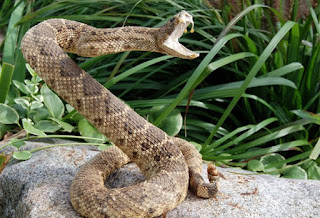Snake Bites
What are snake bites?
Snakes bite either to capture prey or for self-defense. But since there are so many different types of snakes — including both venomous and non-venomous — not every snake bite is created equal.
Different species carry different types of venom. The major categories include:
1.Cytotoxins: Cause swelling and tissue damage wherever you’ve been bitten.
2.Haemorrhagins: Disrupt the blood vessels.
3.Anti-clotting agents: Prevent the blood from clotting.
4.Neurotoxins: Cause paralysis or other damage to the nervous system.
5.Myotoxins: Break down muscles.
Snake bites are very dangerous
It is very obvious that snake bites are really dangerous because it leads to death if care is not taken, but there are two different types of snake bites. And one is more serious than the other:
1.Dry bites: These occur when a snake doesn’t release any venom with its bite. As you’d expect, these are mostly seen with non-venomous snakes.
2.Venomous bites: These are much more dangerous. They occur when a snake transmits venom during a bite.
Poisonous snakes voluntarily emit venom when they bite. They can control the amount of venom they discharge, and 50 to 70% of venomous snake bites result in envenoming or poisoning. Even with a less serious type of bite, every snake bite should be treated as a medical emergency — unless you’re absolutely sure that the bite came from a non-venomous snake. Any delay in treatment following a venomous snake bite could result in serious injury or, in the worst-case scenario, death.
Are snake bites really common?
Snake bites aren’t terribly common in the U.S. — and they aren’t usually fatal. But according to the World Health Organization, between 4.5 and 5.4 million snake bites occur each year and 1.8 to 2.7 million of those cause illnesses. It’s estimated that at least 81,000 to 138,000 people die each year from snake bites.
Even so it is best to treat all snake bites as a medical emergency unless one is certain the bite came from a non-venomous snake. Any delay in treatment following the bite of a venomous snake could result in death or serious injury.
Which region in the world is most at risk of suffering a snake bite?
Up to 95% of snake bites occur in either tropical or developing countries. Those who live in South Asia, Southeast Asia and sub-Saharan Africa are particularly affected by venomous snake bites, as they often don’t have access to adequate healthcare services or antivenoms. Snake bites are also especially common in poor communities, often in rural areas. People with specific jobs are also more at risk, including:
1.Agricultural workers.
2.Herders.
3.Fishermen.
4.Hunters.
In North America, most snakes are not venomous. But those that are venomous include the rattlesnake, water moccasin, coral snake and copperhead snake.





Comments
Post a Comment